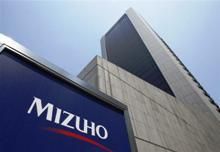Mizuho’s campaign to crack the US market is paying dividends, with the bank besting its Japanese rivals in the corporate bond space and preparing an even bigger push into investment banking.
Unlike other Japanese banks, which have made their way in the US through strategic partnerships with local institutions, Mizuho has been forging its own path in the country.
The game-changer was its purchase of Royal Bank of Scotland’s US$36.5bn loan book almost two years ago – a deal that transformed Mizuho’s US presence overnight.
The acquisition increased its client relationships roughly tenfold and helped pave the way for the bank’s large Stateside ambitions.
“The RBS acquisition was a big catalyst,” said Andrew Dewing, Mizuho’s head of North American banking and the only non-Japanese managing executive officer in the bank.
“It transformed our physical footprint in this market by boosting our debt financing capabilities and expanded the number of first-call relationships we have with US corporate clients.”
Last year, Mizuho ranked 10th in the Thomson Reuters US investment-grade bond league tables, well above Mitsubishi UFJ and Sumitomo Mitsui, which came 14th and 17th, respectively.
Both those banks have major tie-ups with US banks that began in the wake of the financial crisis.
Mitsubishi purchased a large stake in Morgan Stanley, while Sumitomo made a significant investment in Goldman Sachs.
Mizuho, on the other hand, has been going it alone, underpinned by its purchase of the RBS loan book.
“Mizuho took over a business where the institution had vacated the DCM space in the US,” one senior banker told IFR. “Its Japanese rivals didn’t have that luxury.”
CULTURAL SHIFT
With a reputation for a cautious stance toward risk, at least outside of Japan, Japanese banks have not usually been considered serious competition in the US market.
US and European institutions have long been the major players in the United States, of course, but Mizuho is gaining some attention for its outsized ambitions.
“Japanese banks have in the past been brilliant at supporting long-term relationships with domestic clients, but not as consistent with non-Japanese clients,” Dewing said.
“We recognize there is a unique opportunity now to build market share, so our culture and services are evolving.”
Mizuho was mindful of tackling any cultural sensitivities to make the takeover work.
“We’ve seen how hard it is to break into the US for foreign banks when the fundamental culture of their home market business tends to dampen the innovation and nimbleness required for successful expansion in this market,” said Jennifer Powers, managing director and co-head, US investment grade DCM.
“In our case, bringing together the best of the RBS culture with the best of the Mizuho culture – firmly focused on international growth - made it much easier to get acclimatized and be impactful right out of the gate.”
BEYOND LOANS
Mizuho has looked beyond its expanded loans operation to connect bankers working in different asset classes.
“The idea wasn’t just to earn a return on those specific assets,” said Jerry Rizzieri, President and CEO of Mizuho Securities USA. “The goal was to become significantly more relevant to our corporate clients.”
It has hired more than a dozen bankers over the past year to grow its presence in equity, M&A, financial sponsor and strategic capital-raising advisory, and is focused particularly on the energy, healthcare, REIT, retail and technology sectors.
One key avenue to clients has been Mizuho’s commercial paper platform, a high-volume, low-margin business that most banks house in their trading and rates desks.
Its four US-based CP bankers sit within the bank’s debt capital markets business - and alongside the syndicate bankers.
“What CP affords is daily connectivity with the client,” said Paul Feidelson, Mizuho’s head of US commercial paper.
“There’s very few seats in capital markets that allow you to speak to clients every day. CP is one of them.”
The bank has also played in much bigger deals. One that made rivals take notice was a large underwriting check that Mizuho signed for Actavis’s US$66bn acquisition of Allergan in 2015.
“When they showed up on that, people stood back,” said a senior banker at a bulge bracket US bank told IFR.
“But it is not like we are all worrying about Mizuho taking our market share. It will take them many years, loads of investment and consistency to get close to the scale and reach of large US banks.”
Mizuho’s competitive presence, however, has strengthened since then.
It was ranked 13th in the global investment banking fee ranking table in 2016, up from 16th in 2014, according to Thomson Reuters data.
That was higher than Nomura, Mitsubishi UFJ and Sumitomo Mitsui. And the bank had financing roles on several high-profile deals, including Teva Pharmaceutical’s acquisition of Allergan Generics last year.
It was also an active joint bookrunner on Sprint’s uniquely structured US$3.5bn senior secured notes offering backed by wireless spectrum - helped by its relationship with SoftBank.
It plans to keep building on those successes, while being wary of trying to bite off more than it can chew.
“We want to continue hiring and put teams in place that are of the right size and scale,” said John Humphreys, Mizuho’s head of North America investment banking.
“We are wary of over-investing in resources and growing too big too fast, because we recognize the competitive advantage we have built in not trying to be all things to all people.”
